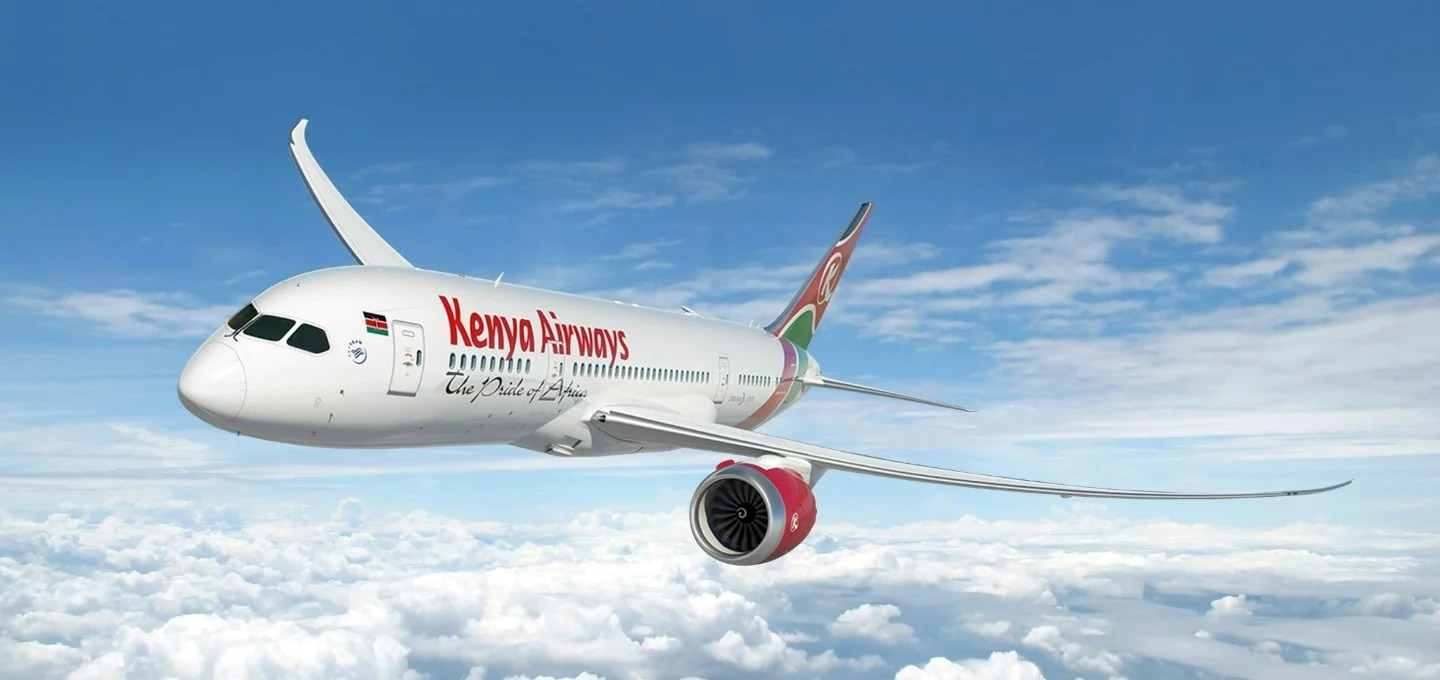Kenya Airways (KQ) has marked a significant milestone in its financial recovery, reporting a net profit of KSh5.432 billion for the full year 2024, a remarkable 124 per cent increase year-on-year.
The airline’s latest earnings, underscore the success of its strategic turnaround plan, Project Kifaru, which has been pivotal in steering the company back to profitability after years of financial turbulence.
The FY2024 earnings breakdown highlights a 6 per cent rise in turnover, reaching KSh188.495 billion, the highest ever recorded by the airline for a full-year period. Passenger numbers grew by 4per cent to 5.23 million, reflecting steady demand, while cargo volume saw an impressive 25 per cent surge to 70,776 tonnes, capitalising on the global rebound in logistics and trade post-COVID. Operating profit also climbed to KSh16.622 billion, signaling improved efficiency and cost management.
However, a closer look at the airline’s financial statements reveals some challenges. Despite the strong net profit growth, the consolidated income statement shows a 12 per cent decline in net profit/loss after tax compared to 2023, suggesting that rising operational costs or other expenses may have offset some of the gains from revenue growth.
Total income for FY2024 stood at KSh188.495 billion, up 6 per cent, but operating costs also rose to KSh171.873 billion, a 5 per cent increase from the previous year. This indicates that while KQ has made significant strides, cost pressures remain a concern.
The airline’s balance sheet reflects a mixed picture. Total assets grew slightly to KSh197.804 billion from KSh196.402 billion in 2023, but total equity attributable to owners remained negative at KSh108.294 billion, highlighting the airline’s ongoing struggle with legacy debt and liabilities.
Stay updated with our weekly newsletter. Subscribe now to never miss an update!
On a positive note, cash flow from operating activities improved significantly, with net cash generated from operations rising to KSh17.740 billion from KSh12.457 billion in 2023, bolstered by better working capital management.
The cargo segment’s 25 per cent growth to 70,776 tonnes underscores KQ’s strategic pivot to diversify revenue streams, a move that has paid off amid global supply chain disruptions. Meanwhile, the modest 4 per cent increase in passenger numbers to 5.23 million reflects cautious growth in air travel demand.
KQ CEO Kilavuka’s leadership, which began on April 1, 2020, at the height of the COVID-19 crisis, has been instrumental in navigating the airline through one of its most challenging periods.
In a 2023 interview, he emphasised the need for consolidation in Africa’s fragmented aviation industry, advocating for partnerships like the one with South African Airways to expand KQ’s reach without the heavy capital expenditure of fleet expansion.
“We believe that’s a much faster strategy for growth and for reduction of cost,” Kilavuka said, highlighting how such collaborations allow KQ to offer destinations like Sydney and Beijing through partner networks.
However, challenges remain, particularly in managing costs and addressing the airline’s negative equity position. As Kenya Airways continues to build on its Project Kifaru framework, the focus will likely shift toward sustainable growth, competitive pricing, and further debt restructuring to solidify its financial foundation.
For now, Kenya Airways’ FY2024 earnings signal a promising new chapter for the Pride of Africa, proving that with strategic discipline and a clear vision, even the most turbulent skies can lead to a smoother landing.












